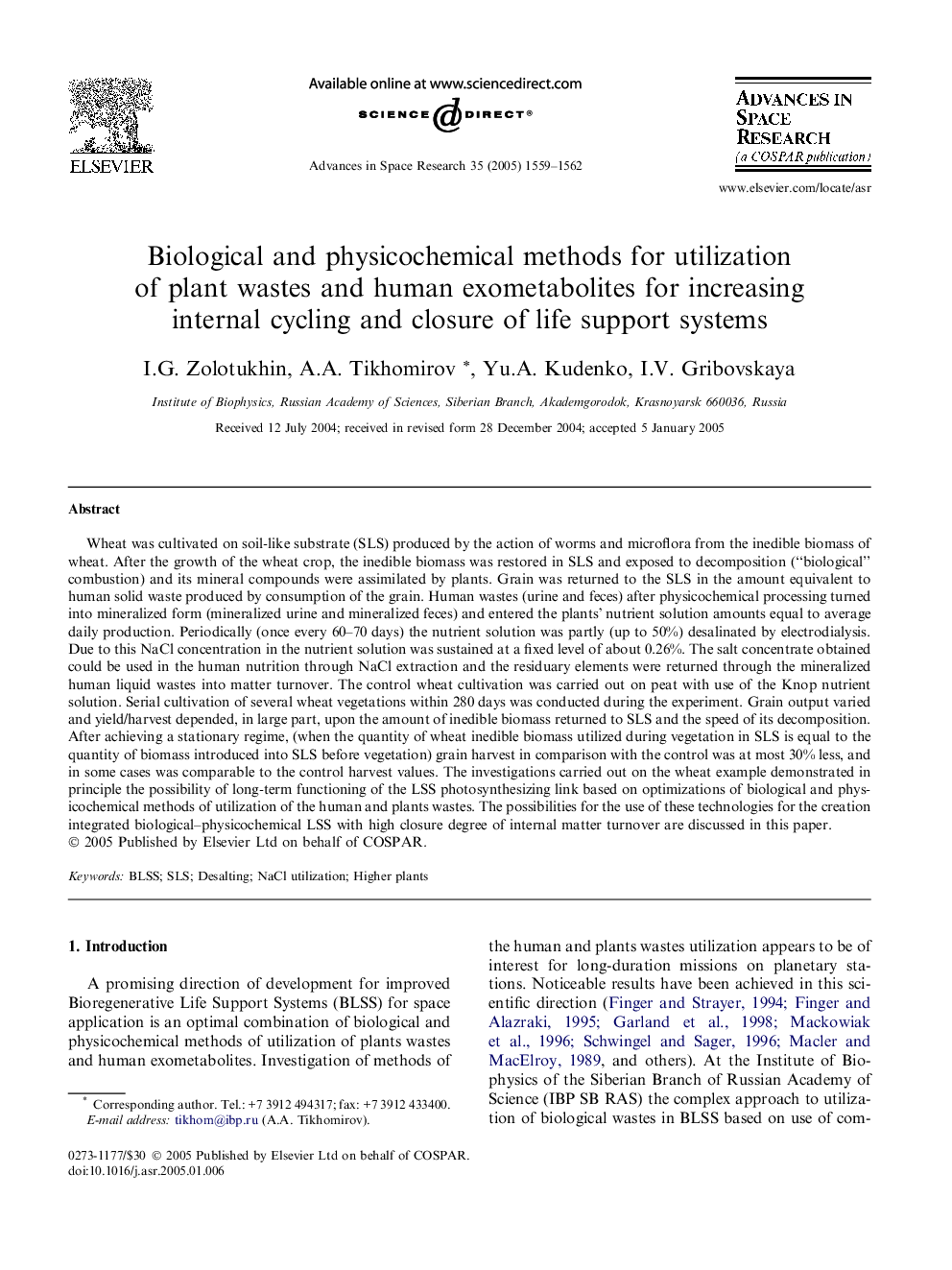| کد مقاله | کد نشریه | سال انتشار | مقاله انگلیسی | نسخه تمام متن |
|---|---|---|---|---|
| 10695408 | 1020274 | 2005 | 4 صفحه PDF | دانلود رایگان |
عنوان انگلیسی مقاله ISI
Biological and physicochemical methods for utilization of plant wastes and human exometabolites for increasing internal cycling and closure of life support systems
دانلود مقاله + سفارش ترجمه
دانلود مقاله ISI انگلیسی
رایگان برای ایرانیان
موضوعات مرتبط
مهندسی و علوم پایه
علوم زمین و سیارات
علوم فضا و نجوم
پیش نمایش صفحه اول مقاله

چکیده انگلیسی
Wheat was cultivated on soil-like substrate (SLS) produced by the action of worms and microflora from the inedible biomass of wheat. After the growth of the wheat crop, the inedible biomass was restored in SLS and exposed to decomposition (“biological” combustion) and its mineral compounds were assimilated by plants. Grain was returned to the SLS in the amount equivalent to human solid waste produced by consumption of the grain. Human wastes (urine and feces) after physicochemical processing turned into mineralized form (mineralized urine and mineralized feces) and entered the plants' nutrient solution amounts equal to average daily production. Periodically (once every 60-70Â days) the nutrient solution was partly (up to 50%) desalinated by electrodialysis. Due to this NaCl concentration in the nutrient solution was sustained at a fixed level of about 0.26%. The salt concentrate obtained could be used in the human nutrition through NaCl extraction and the residuary elements were returned through the mineralized human liquid wastes into matter turnover. The control wheat cultivation was carried out on peat with use of the Knop nutrient solution. Serial cultivation of several wheat vegetations within 280Â days was conducted during the experiment. Grain output varied and yield/harvest depended, in large part, upon the amount of inedible biomass returned to SLS and the speed of its decomposition. After achieving a stationary regime, (when the quantity of wheat inedible biomass utilized during vegetation in SLS is equal to the quantity of biomass introduced into SLS before vegetation) grain harvest in comparison with the control was at most 30% less, and in some cases was comparable to the control harvest values. The investigations carried out on the wheat example demonstrated in principle the possibility of long-term functioning of the LSS photosynthesizing link based on optimizations of biological and physicochemical methods of utilization of the human and plants wastes. The possibilities for the use of these technologies for the creation integrated biological-physicochemical LSS with high closure degree of internal matter turnover are discussed in this paper.
ناشر
Database: Elsevier - ScienceDirect (ساینس دایرکت)
Journal: Advances in Space Research - Volume 35, Issue 9, 2005, Pages 1559-1562
Journal: Advances in Space Research - Volume 35, Issue 9, 2005, Pages 1559-1562
نویسندگان
I.G. Zolotukhin, A.A. Tikhomirov, Yu.A. Kudenko, I.V. Gribovskaya,